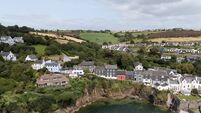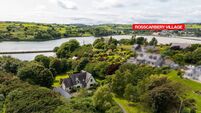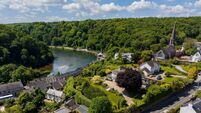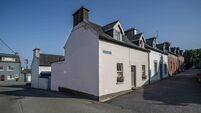Hot property: Future-proofed 1840s-built Roseville gets an extraordinary B1 energy rating

One of the most significant buildings of its type in Limerick has been thoroughly renovated and now has an energy rating that’d be the envy of many a new home, writes
THE single most remarkable exterior feature of Roseville House on Corbally Road is the highly elaborate cast-iron porch which guards its front entrance.
Added on to the late Georgian property at the end of the Edwardian era, it has a slightly nautical theme, with fish-scale panes on the roof and depictions of sea serpents on the sides.
Practical as well as decorative, this highly individual feature is one of the reasons that the National Inventory of Architectural Heritage describes Roseville House as one of the most significant buildings in the area.
Viewers of the recently-renovated 4,000 sq ft property will admire the craftsmanship in the porch as well as the elegance of the interior which has many original features including high ceiling, cornicing, and fireplaces. They will also discover that the property has a new, rather remarkable 21st century feature — a B1 energy rating which is highly unexpected for a house of this age.

When it was advertised for sale in 2015, Roseville House was said to be in major need of TLC. Dating back to 1840, it was built by the family of William Holliday, managing director of Boyd’s of Limerick.
Sold by the Hollidays in the 1960s, it had two subsequent owners before Deirdre O’Loughlin and Ronan O’Brien found it in 2015 and decided to give it the TLC it needed. Given the size of the two-bay, two-storey-over-basement house, and the fact that it need to be re-roofed, rewired, re-plumbed, replastered and insulated, this was no easy feat.
“We started by hiring a project manager / architect to oversee the renovation, which took a full year. He designed a kitchen extension and also remodeled the upstairs which didn’t have a bathroom,” reveals Deirdre.
The high energy rating was achieved with an air-to-water heat pump and a high level of insulation. “We put in internal insulation slabs on external walls — but took great care to protect the surviving picture rails and coving,”

Conservation of all that could be saved was a priority, and original sash windows on the front were restored, but the ones on the back had to be replaced. The damp and unused basement, originally designed for the servants, was given a full treatment with 21st century insulation.
While the builders worked on the house, Deirdre worked on the plan for the decor, keeping as many features as she could and finding appropriate substitutes that she couldn’t
“There are original features all over the house — these including cornicing, centre roses, architraves, some flooring timber panels in the hallway, as well as sinks, fireplaces, lights and doors.”

Although keeping original features was important, the aim was also to modernise and to make it a warm and comfortable home. Beyond the distinctive decorative front porch which has been restored and repainted, is an imposing hallway with original timber flooring and restored Georgian Lincrusta panelling.
At one side of the hall is an elegant front drawing room which has become the family TV room — it has two large shuttered sash windows, period detailing, and an elaborate black fireplace.
Across the hallway, the dining room, with cornicing, shuttered windows, and a black marble fireplace now serves as the piano room. Painted a warm shade of gold, it has period furniture and the perfect space for the piano.

When the owners bought the house there was a kitchen extension which was most likely added on during Victorian times. They kept the original floor tiles and asked Charleville cabinetmaker Seamus Reidy to design a new kitchen for them. Cream to blend in with the floor, this has quartz worktops and an island unit, a Stanley cooker, and vintage-style pewter and ceramic handles.
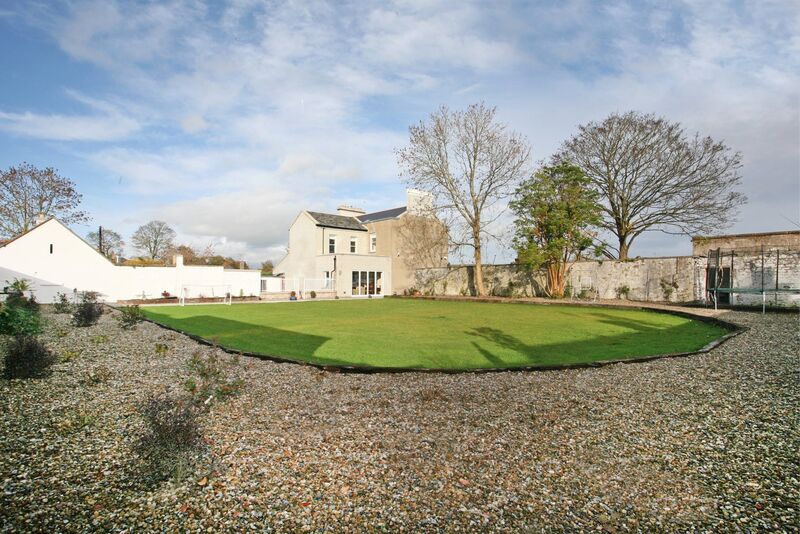
Adding on an extension to let in the light, the owners created a modern sunroom/dining area with parquet effect floor tiles, an orangery light, and bi-fold doors.
There’s also a butler’s pantry, a utility room and ground-floor bathroom which has its original sink on a cast iron base as well as a new corner shower. Down in the basement there’s a large playroom as well as an office/study with a fireplace.

Upstairs, the owners have reduced the number of bedrooms from five to four, using the space to put in a bathroom, fitting it with an Edwardian-style sink and a roll-top porcelain bath. The main bedroom is on the first floor return and has an en-suite.
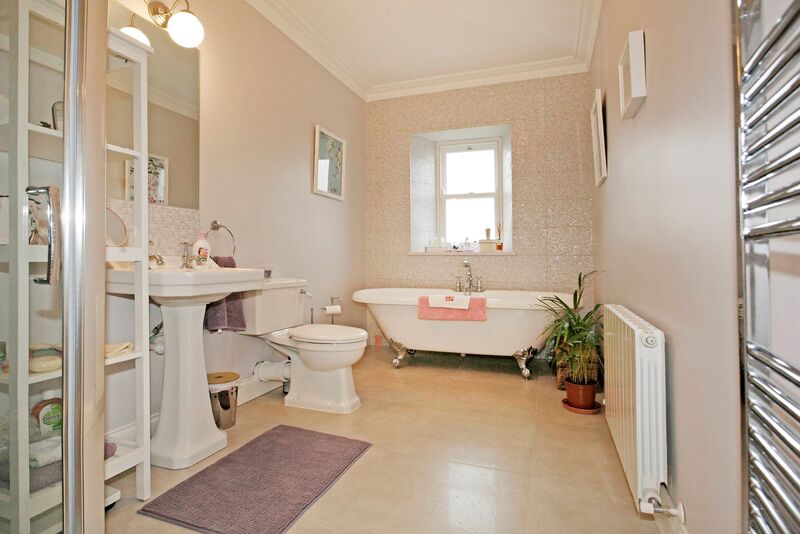
The final step for the owners was clearing and replanting the one-acre site which had once been a beautiful garden but was wildly over grown. The removal of dangerous trees provided the family with an enormous wood pile.
Enlisting the aid of Dundrum Nurseries, they put down hundreds of plants, shrubs and trees, including rosebushes and hydrangea. Come spring and summer, a new owner can expect to reap the rewards of their labour.
Roseville House is now a very different property from the neglected one which the owners purchased for €385,000 in early 2016. Selling agents DNG Cusack Dunne say it is without doubt one of Limerick’s finest and most significant period homes.
in addition to the elegance of the house and potential splendour of the gardens, selling points include the location on Corbally Road close to local schools and amenities.
And, with its large site, surrounded by high stone walls, the property looks as if it might be located in the countryside, but is within a 15-minute walk of Limerick city.
VERDICT: Elegantly restored with a high energy rating.
Corbally, Limerick
€855,000
Sq m 370 ( 4,000 sq ft)
Bedrooms:4
Bathrooms: 3
BER: B1






